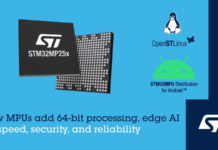India Semiconductor Fab Ecosystem |The entire industry is talking about the semiconductors fab, how and when? Looking at past failure and continuing trade war, chip shortage, corona and economy have put us all in the situation to talk, to suggest and to act something beneficial towards Atmanirbhar Bharat. Dr. Abhilasha Gaur from Electronic Sector Skill Council of India (ESSCI) and Prof. Mayank Shrivastava, Indian Institute of Science, Bangalore and co-founder of AGNIT Semiconductors Pvt. Ltd shares the thought-provoking opinion about the upcoming India Semiconductor Fab ecosystem and discusses the government released schemes for building a semiconductor ecosystem. The answers or opinion aims to achieve the trillion-dollar economy and not only to be self-reliant but to emerge as the leader in the semiconductor industry.
According to you what are the technologies in FABs and the market segments India should start with?
Dr. Abhilasha Gaur : From India’s perspective present challenges are related to semiconductor R&D funding, fabrication unit and OSAT. Chip design and manufacturing are highly capital intensive. A semiconductor fab facility for chip manufacturing would require an investment of 10 billion USD, while technologies involved itself are fast evolving. Unless the commercial viability of such investment is evident, private investors will not be showing any interest. Commercial viability is determined by scale and efficiency, which would mean catering to domestic market even in the presence of preferential market access will not be adequate. Hence for production to happen in India, the market orientation needs to be global, which can be a challenge for any new manufacturer.
Considering above facts, India may opt for fabless chip facilities for developing the semiconductor manufacturing ecosystem. This is truly a good and doable option through which we are able to integrate with the OEMs, so that the sustainable demand is created.
Prof. Mayank Shrivastava (IISc Bangalore): India may not need to invest in bleeding edge semiconductor manufacturing like 5 nm, 7 nm or 14 nm nodes, which are very expensive and cater to a limited market (Processor/Data-Centre) at present. It is very difficult to catch-up in these nodes and compete with leading players. On the other hand, Si chip manufacturing in the 28 nm (SoC), 65nm (SoC), 130/180nm (Automotive/Analog/PwrSoC) nodes, and discrete components such as Si or GaN based power semiconductor devices, provide ample business opportunities without requiring a significant capital investment. This will help India to get into the Semiconductor business. These technologies also don’t have high obsolescence when compared to bleeding edge technologies. However, to become a leader in future, India must proactively invest in upcoming / beyond Si technologies such as 2-dimentional semiconducting material based nodes, which are projected to touch the market, as per International Roadmap for Devices and Systems (IRDS), by year 2028. An investment in such future nodes, where India has ample opportunity to develop indigenous knowhow and knowledgebase, will generate enough traction for leading industries to invest in India, in future. The learnings from manufacturing in older nodes and proactive developments in future nodes hopefully will get India into semiconductor race in next 8-10 years.
Also, read about India’s Semiconductor Industry progress so far, dated 6th April, 2022.
Semiconductor fabrication is not just a process it is an ecosystem that requires many things apart from investment and policies. What is your intake on this?
Dr. Abhilasha Gaur: Apart from the government support in terms of the investment and policies by providing funds and subsidies, infrastructure is a big problem. You need 24-hour supply of power, water supply, and the surrounding ecosystem of equipment players and materials for constant demand, which as of now is not there.
Prof. Mayank Shrivastava (IISc Bangalore): Aggressive, agile, and quick decision making is the mantra for the success of semiconductor manufacturing. Besides, you need a complete hold on the demand and supply chain, both at the operations front and product (Fab’s outcome) front. At the operations front you must have easy access to raw materials (chemicals, gases, consumables, etc), Fab equipment and an excellent pool of manpower. At present we don’t have indigenous manufacturing of these (semiconductor Fab grade) raw materials. We are dependent on imports, which needs to be addressed through proactive policy making and govt. investments to promote local manufacturing. Equipment are not always manufactured locally, but govt. must have ties with leading equipment manufacturers to avoid delays in the supply of Fab equipment. Currently the lead time is significantly high, and it is required to be addressed proactively. For manpower, govt. needs to invest in dedicated M-Tech (Microelectronics and VLSI Design) and PhD level programs at select institutes in India. The policies need to be aggressive and competitive.
Demand and supply for Fab’s products is extremely critical. Its difficult to compete in bleeding edge technologies if we haven’t started before leading companies. The demand-supply chain in such nodes is a close-loop and its difficult for Indian players to penetrate that. On the other hand, investment on nodes such as 65nm, 130nm, 180nm, which directly lead to products for open market, or off-the-shelf components, or generic SoCs/PwrSoC/Automotive chips in demand by system manufacturers, and discrete components, will generate enough business without being heavily dependent on the complex demand-supply game. Besides, policies to promote design and development of electronics hardware in India must also be promoted. These hardware start-ups would also generate additional pull for locally manufactured chips.
R&D initiatives is another factor to consider. One must invest on upcoming/future technologies with a view to jump the roadmap and get into the race a few years down the line by generating the required traction locally. Govt. needs to think/plan strategically to get India into the race of future/upcoming technology race, for example beyond Si technologies.
In a nutshell, a holistic and comprehensive policy should evolve, cutting across all aspects as explain above, including infrastructure and investment, research and education, trade and taxation, market demand creation and incentivization of domestic products.
Is the Government’s New Schemes for Semiconductors enough, do you expect or suggest some more policies?
Prof. Mayank Shrivastava (IISc Bangalore): I think I covered most of the points above. However, if I can re-emphasize on the manpower needs, I must highlight that semiconductor development and manufacturing is a highly complex job and therefore require highly trained engineers. What do I mean by highly trained? I mean well trained M-Tech and PhD graduates in areas related to Micro/Nanoelectronics. Typically, in a semiconductor company, while the Fab tools are operated (often remotely) by technicians, most of the R&D jobs are performed by PhDs. When I was in Intel (and same with IBM and Infineon too – my other two employers/hosts), everyone in my team had a PhD in related areas. For day-to-day activities such as testing, qualification, verification, etc., you need plenty of M-techs. Govt. needs to invest on generating a significant pool by investing on targeted M-Techs and PhD programs at select institutes / groups with relevant expertise.
Opinions are divided, India should focus on fabless rather than fabs, as it is a win-win situation. How do you take this?
Dr. Abhilasha Gaur: As already indicated, India’s industry participants need to evolve while government new policy push is available. SoC integrators that perform only parts of IC development and design must move up the value chain to become self-sufficient in defining and architecting complete specifications of an IC or an IP core, through integrating SoCs, validating and characterizing silicon, and enabling designs and products based on the designed chipset. This step will make India the destination of choice for establishing a complete IC business while securing good number of global customers and markets.
Prof. Mayank Shrivastava (IISc Bangalore): I don’t think opinions are divided. People know it well that India must have multiple fabs. The question however is who the takers are. Parallel to the establishment of fabs, the number of design houses, which will become the taker of these fabs, should be increased through proactive govt. policies. Synergy should be created between the fabs that cater to a certain demand and these fabless design houses that would create the pull.
Talking about the DLI scheme, the focus on design infrastructure is great to move but regulation of IP is complicated, should not gov focus on it?
Dr. Abhilasha Gaur: The fierce competition between major countries has already expanded from trade to high-tech protection, regional strategies leading to a revolution of Semiconductor and Information Technology which lead to emergence of new branch in the field of intellectual property, namely, Layout-Design has come into being, which is also known as semiconductor integrated circuits. India has already enforced Semiconductor microcircuit layout Act, 2000 that provides for cover of creator or author of Semiconductor IC layout design. However similar amendment and support will be required while GoI has launched the DLI scheme.
Prof. Mayank Shrivastava (IISc Bangalore): It is a tricky matter but in semiconductor business IP is everything and therefore a certain regulation/control on IPs is required. The government would need to impose a certain checks and balances to implement the scheme fairly. Besides, to stay in the business, we need to have a good hold on IPs without affecting the development and commercialization.
Scheme for Setting up of Display Fabs is confined with LCDs and AMOLEDs while Semicon giants are moving to newer technologies like Quantum-dot displays so import might still continue. How can we parallel our growth with the rest of the world?
Dr. Abhilasha Gaur: Semicon Giants have their own research and intelligence to parallel their growth with the rest of the World, however India must focus in promoting and creating IPs in the sector.
Prof. Mayank Shrivastava (IISc Bangalore): When you look into the market size, the LCDs and AMOLEDs are bigger markets than the market for newer technologies. The market is not divided only by the technologies but also by the cost. There is a big segment of customer who needs affordable or cheaper displays. Keeping this in mind, I think govt. has made a great move. Once we have catered to the LCDs and AMOLEDs markets, premium segment can be catered subsequently. As I said before India should not be investing in bleeding-edge technologies. India should start where there is a high chance of success, get enough experience in running fabs, generate enough traction for further investment and then scale-up as well as upgrade to bleeding-edge.
How do you see the setting up of ATMP and OSAT facilities in absence of Fab? Isn’t it a perplexing scheme? As in absence of Fab the import of wafers then in-home packaging and again exporting if OEM is outside will eventually increase the cost.
Dr. Abhilasha Gaur :Indeed its a perplexing situation but for India to achieve self-reliance, it can be done through achieving high trade engagement for semiconductor components and the finished products. Also to address the situation, India need faster investments in its own technological competitiveness while strengthening the resiliency of the domestic and allied-partner supply chains.
Prof. Mayank Shrivastava (IISc Bangalore): At most of the places, ATMP and OSAT services are not offered by the Fabs which may have processed the wafer/design. So, this is not a perplexing scheme, but the ATMP and OSAT companies in India would need to offer cost advantage when compared to their competitors in China, Singapore, Korea and Taiwan.

















